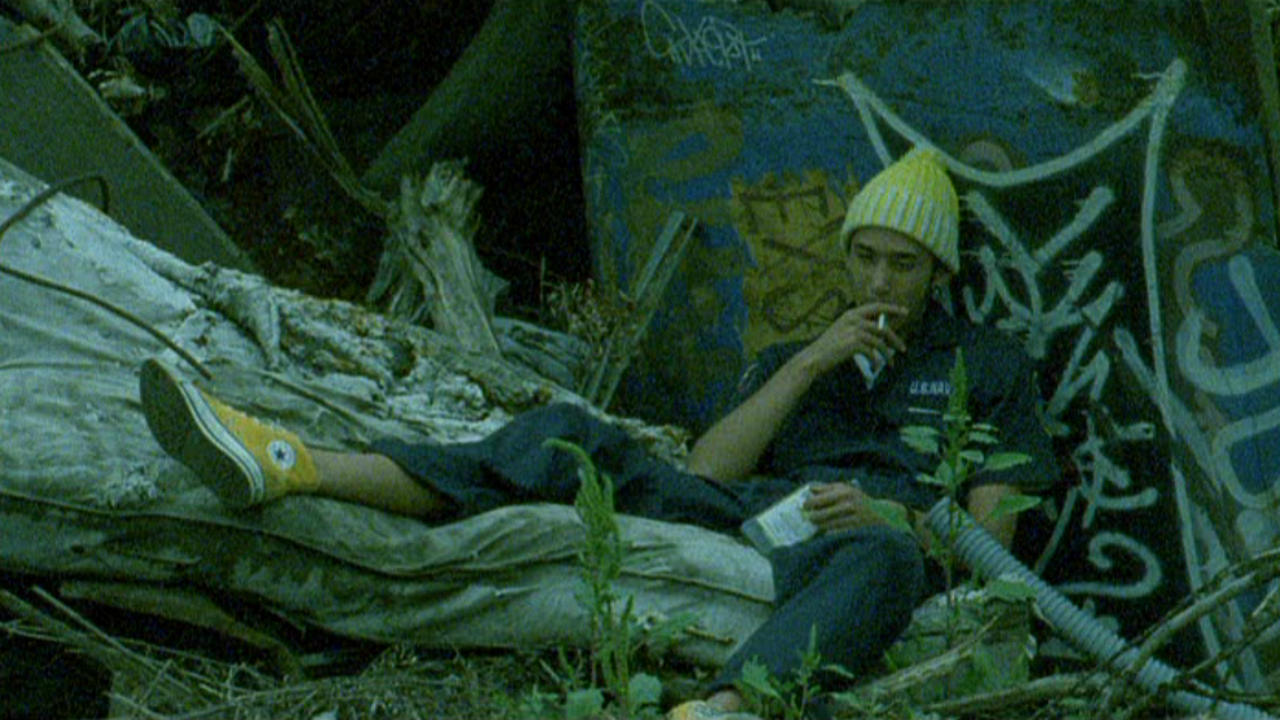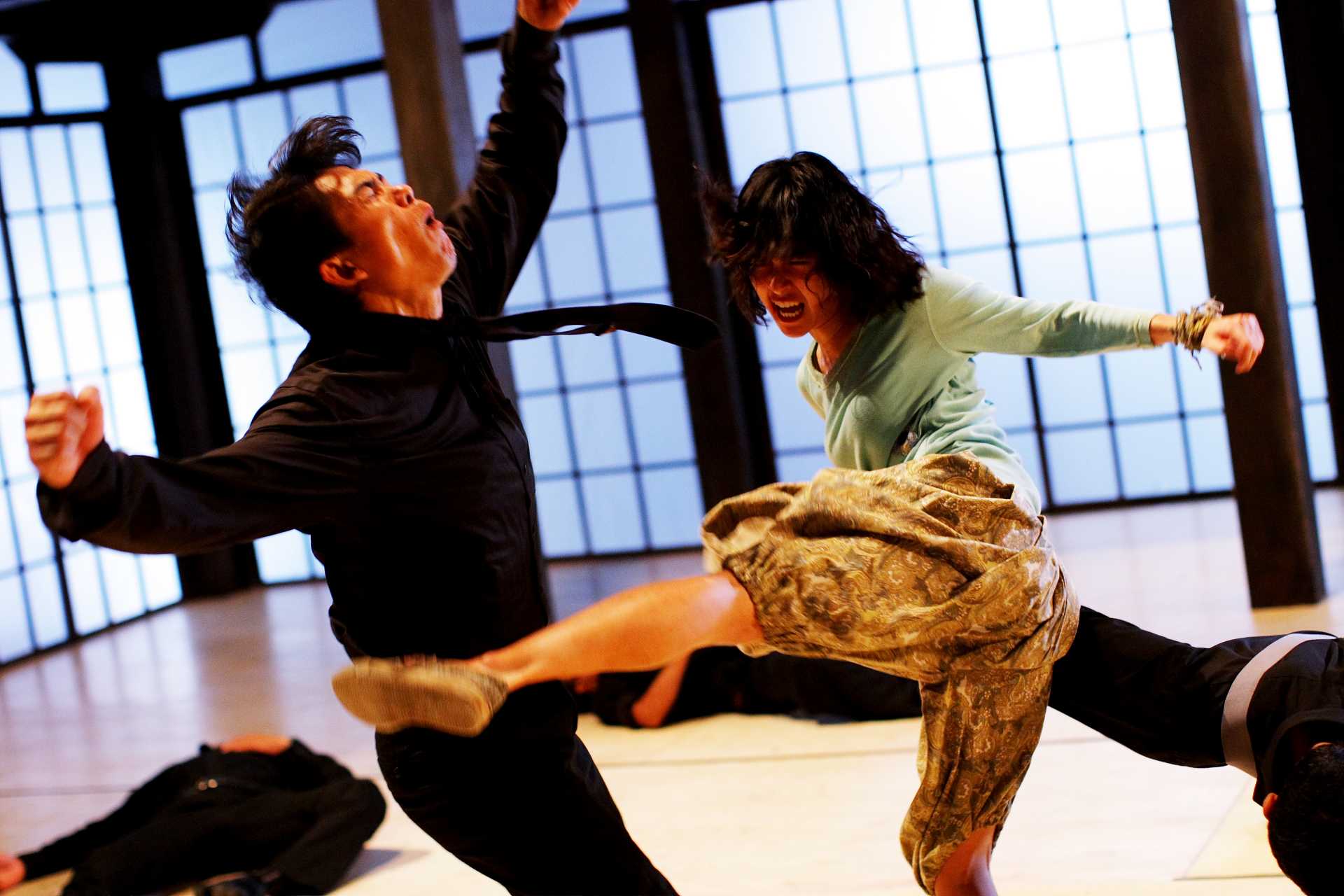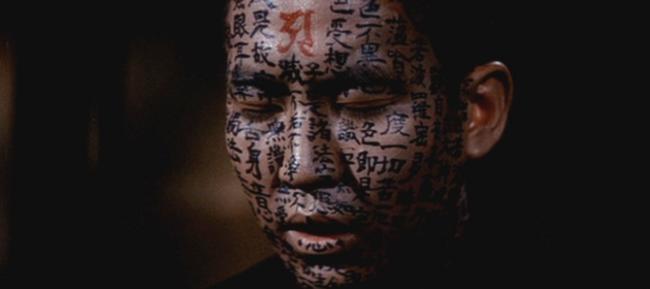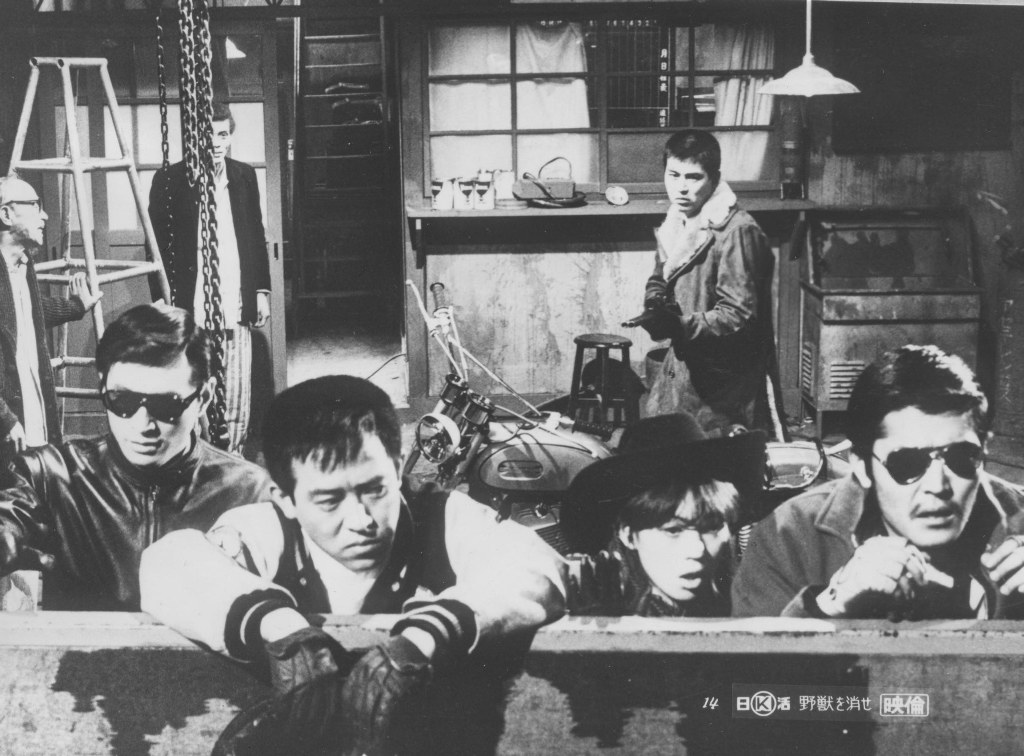11. Eight Diagram Pole Fighter (Hong Kong, 1984)
The Shaw Brothers are responsible for some of the greatest kung fu films ever made. Eight Diagram Pole Fighter has all the right ingredients to be considered one of the classics, but is generally not mentioned amongst the likes of The 36th Chamber of Shaolin or The One Armed Swordsman.
While this was being filmed, the star, Sheng Fu, died in an automobile accident so the writers made Gordon Liu’s character the focal point of the story instead. The seven Yang brothers are elite spearmen, but after the betrayal of a jealous General, five of the seven brothers are slaughtered by the Mongol army. The surviving fifth brother (Liu) goes into hiding and trains to face the parties responsible for the death of his brothers.
The final action sequence is an 11 minute spectacle that should rank as one of the finest choreographed action scenes in kung fu cinema history.
12. Hazard (Japan, 2005)
Sono Sion’s directorial efforts have been considered controversial, crazy, coarse and cool. Hazard is a far more restrained Sion outing, with this coming-of-age tale about a teenager who doesn’t feel like he belongs in Japan, so he pursues his dream of living in New York. But the transition to life in New York isn’t a smooth ride. Sion does a brilliant job of coupling the chaos of finding your own feet in unfamiliar territory with the wild, untamed spirit of youth via the use of handicam throughout this film.
13. Chocolate (Thailand, 2008)
A shameless love letter to martial arts movies, Chocolate was the first film that JeeJa Yanin starred in. An autistic girl named Zen who watched countless hours of martial arts films growing up shows a freakish ability to mimic said films. Her mother, an ex-gangster, falls ill and requires chemotherapy. Zen becomes an enforced to collect debts owed. Queue some of the finest homages to martial art styles and movies – Bruce Lee, Jackie Chan and Muay Thai to name a few – delivered by the seriously talented JeeJa Yanin.
14. Kwaidan (Japan, 1964)
Kwaidan is a ghost story anthology film that runs for just over three hours. There are four very distinct stories, all helmed by Masaki Kobayashi.
The Black Hair has several shot angles that I found unique and the quality of the story isn’t too bad, either. The Woman of the Snow is one creepy ride, but serves as one of the most picturesque offerings in this set of stories. A number of the backgrounds are hand-painted and are a wonder to behold. Hoichi the Earless is the standout of the four stories by far, as a blind monk in training is led astray by a ghost. In a Cup of Tea is the tale of a nobleman that starts to see a man appear in his tea. The shadow work in this final film is very well shot.
15. Savage Wolf Pack (Japan, 1974)
Savage Wolf Pack pulls no punches from the opening sequence and plays with the conventions of the revenge action genre. Yasuhara Hasebe, director of the Stray Cat Rock series, delivers another fine exploitation film. Tetsuya Watari (of Tokyo Drifter fame) delivers a magnificent performance as a professional big game hunter whose younger sister committed suicide after being brutally raped by a biker gang.
The revenge plot consumes the last quarter of the running length, but the first three quarters isn’t exactly smooth sailing for the protagonist, which makes the finale all the more satisfying once the bikers are brought to justice for their actions.




